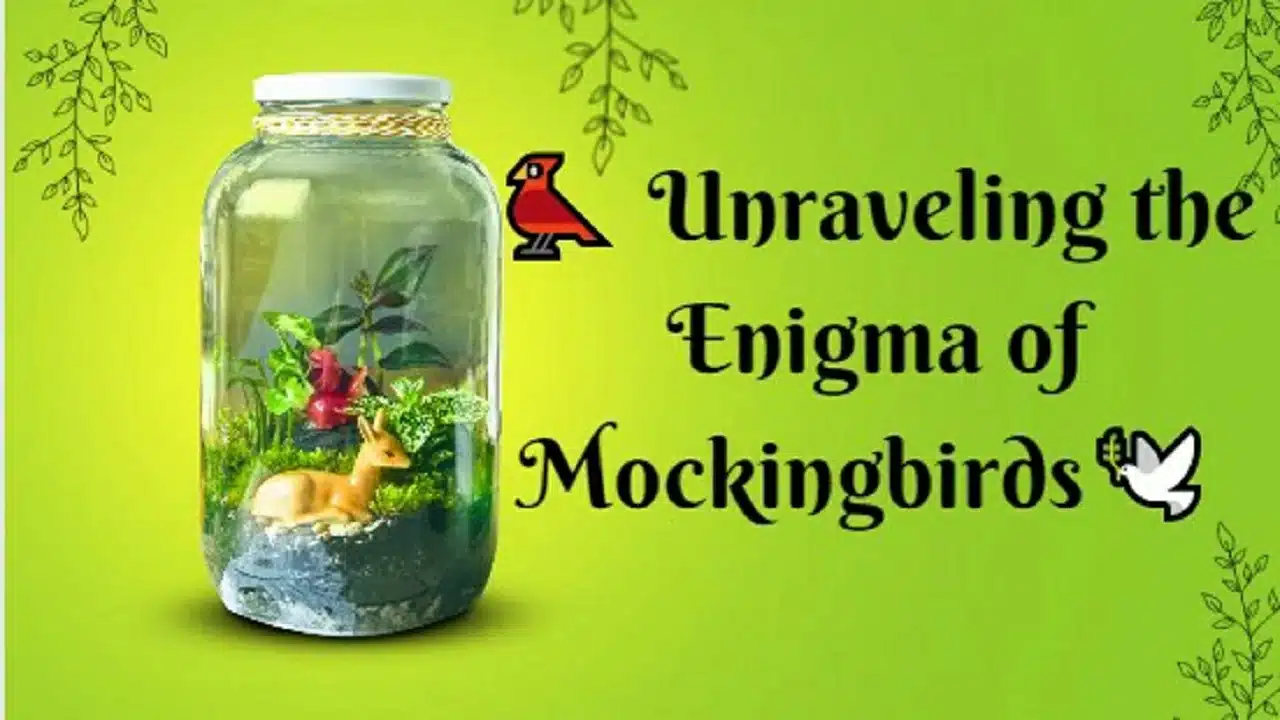Introduction
Mockingbirds, with their unmatched ability to mimic sounds and songs of other birds, have always intrigued birdwatchers and naturalists alike.
These fascinating creatures belong to the Mimidae family and are known for their diverse vocal repertoires and striking plumage. In this article, we will delve into the captivating world of mockingbirds, exploring their extraordinary mimicry skills, behavior, habitat, and the vital role they play in the ecosystem.

Table of Contents
What Makes Mockingbirds Master Mimics?
Mockingbirds possess a remarkable vocal apparatus that allows them to replicate a wide range of sounds with exceptional accuracy. Their syrinx, the vocal organ of birds, is highly specialized, enabling them to produce intricate melodies and imitate various noises. Additionally, young mockingbirds learn their songs by listening to other birds and environmental sounds, allowing them to continually expand their repertoire as they grow.
A Symphony of Sounds: Mockingbird’s Vocal Repertoire
From the tranquil melodies of songbirds to the jarring noises of car alarms, mockingbirds demonstrate their ability to mimic both natural and human-made sounds. Their performances often consist of elaborate medleys that incorporate the songs of other birds, insects, and even snippets of human conversations.
Why Do Mockingbirds Mimic?
Mockingbirds employ their mimicry skills for various purposes. During the breeding season, male mockingbirds showcase their vocal prowess to attract potential mates and establish territories. Additionally, they mimic predators’ calls to ward off potential threats and protect their nesting areas.
Read more….
🐦What is Bird ?🌿🦜✨ Why did God create them ?🐦🗺️🌺
Top 20+ Instagram Name Style | 💫😍
🔥💥🎮 Level up your game with these sizzling Free Fire name styles ! 💪🔥😎
🔥🎮 Discover the Coolest Free Fire Name to Dominate the Gaming Arena! 🏆
The Life of a Mockingbird
Mockingbirds are omnivorous creatures, feasting on a diet that includes berries, insects, fruits, and small vertebrates. They are diligent parents, with both the male and female actively participating in building nests and caring for their young.
Habitat and Distribution
Northern mockingbirds are predominantly found in North America, while tropical mockingbirds inhabit regions like Central and South America. They adapt well to urban environments, making them a common sight in parks and gardens.
The Relationship between Mockingbirds and Humans
Humans have long been captivated by the impressive mimicry of mockingbirds. Their enchanting songs have inspired musicians, writers, and artists across cultures, leaving a lasting impact on literature and folklore.
Conservation Status and Threats
Urbanization poses significant challenges to mockingbirds as it encroaches upon their natural habitats. It is crucial to protect these spaces and raise awareness about the significance of preserving biodiversity.
The Legacy of Mocking in Literature and Culture
Mocking have been revered as symbols of virtue, courage, and freedom in various cultures and belief systems. Their presence in literature and folklore signifies their influence on human imagination and creativity.
Mocking: Guardians of Biodiversity
In their role as seed dispersers, mocking contribute to forest regeneration and the growth of various plant species. They also serve as natural controllers of insect populations, playing a vital part in maintaining ecological balance.
A Closer Look at Northern Mocking
Northern mocking boast a striking appearance, with gray plumage and white wing patches. Their curious and assertive nature makes them a joy to observe in the wild.
Tropical Mocking Species
Tropical regions host an array of unique mocking species, each showcasing distinctive traits and behaviors that make them fascinating subjects for study and observation.
The Unique Courtship Rituals of Mocking
During the mating season, male mocking engage in elaborate displays and singing competitions to attract females. Their courtship rituals are intricate and captivating spectacles.
Migratory Patterns and Seasonal Changes
Some mocking species exhibit migratory behavior, undertaking long journeys across continents to take advantage of seasonal changes and available resources.
The Curious Case of Rare Mocking Hybrids
Occasionally, different mocking species interbreed, giving rise to intriguing hybrid offspring. These hybrids present exciting opportunities for scientific research and conservation efforts.
The Future of Mocking in a Changing World
As ecosystems face increasing challenges due to climate change and human activity, mocking demonstrate their adaptability and resilience. Conservation efforts and habitat preservation are essential to secure their future.
Conclusion
Mockingbirds, with their unparalleled ability to imitate sounds and songs from their surroundings, stand as one of nature’s most enchanting wonders. Their melodious performances and crucial ecological roles make them true masters of mimicry. As we continue to explore the world of these charming avian virtuosos, let us also embrace the responsibility of preserving their habitats and ensuring a harmonious coexistence with these marvelous creatures.
FAQs
- Do all mocking species possess mimicry abilities?While many mocking species exhibit remarkable mimicry skills, not all species have the same level of proficiency.
- How can I attract mocking to my backyard?Providing a bird-friendly environment with feeders, birdbaths, and native plants can attract mocking and other bird species to your backyard.
- What is the significance of mocking in folklore?Mocking have been depicted as symbols of virtue, innocence, and protection in various cultural folklore.
- Can mocking mimic human speech?Yes, mocking can mimic human speech, and they have been known to imitate certain phrases and sounds.
- Are mocking found only in rural areas?No, mocking have adapted well to urban environments and can be found in cities, parks, and gardens.
Leave a Reply